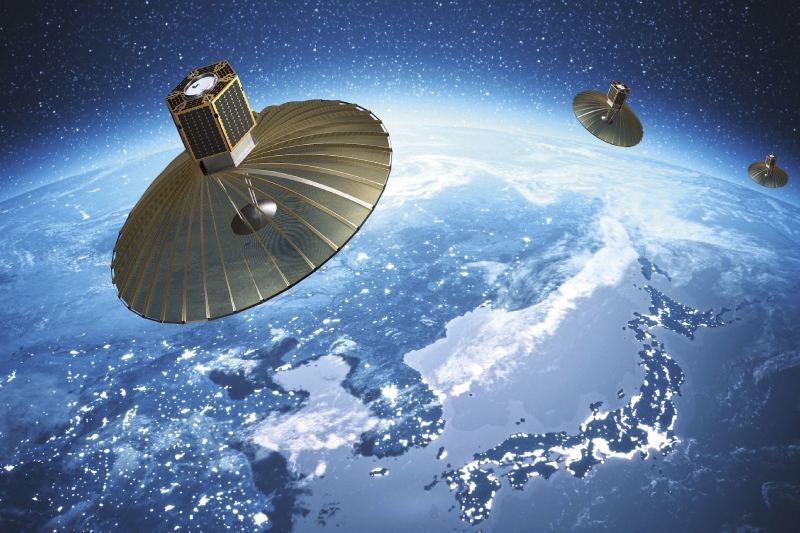
iQPS, a Japanese radar satellite startup, is rapidly growing
- Business
- December 7, 2023
Following its Wednesday stock market debut, Japanese space startup iQPS will step up its expansion efforts in an attempt to build a constellation of satellites and mass produce small, low-cost radar satellites.
The Fukuoka-based startup raised $27 million, or 4 billion yen, in its first public offering. On its first day of trading on the Tokyo Stock Exchange, its shares opened at 860 yen, compared to the initial offering price of 390 yen. They closed at 710 yen.
The company is leading the way in developing small radar satellites, with a weight of approximately 170 kg and an expense per satellite of several million dollars. These were the lightest radar satellites in the world for a while, but rivals like Iceye, based in Finland, and Capella Space, based in the United States, are stepping up their game.
The 3.6-meter-diameter, foldable radar dish on iQPS satellites weighs between 10 and 30 kg, making it manageable for an individual to carry. The dish, which is folded during takeoff and opens upon release into space, is made of metallic mesh.
In order to collect data from the ground, its synthetic aperture radar (SAR) sends out microwaves and detects their reflections. SAR satellites can observe day or night through clouds and other atmospheric obstacles, but they can only produce black and white imagery. This is in contrast to optical satellites.
The SAR satellites of iQPS are able to detect variations in an object’s height as little as a few millimeters. The technology, according to the company, can be used to identify deformation in infrastructure facilities, like railways and electricity transmission lines, which could save infrastructure operators a significant amount of labor.
With 41 workers, the company aims to launch 24 satellites by May 2028 and 36 more in the upcoming years if there is significant demand for its services. It has directed the satellites to observe the same location once every ten minutes.
By mid-2024, it hopes to increase production capacity to 10 satellites annually by expanding its factory with the proceeds from the initial public offering (IPO).
About 10% of the business is held by CEO Shunsuke Onishi, 7% is owned by satellite broadcaster Sky Perfect JSAT, and 7% is owned by INCJ, an investment firm supported by the Japanese government.
Two of the company’s three satellites are presently in use for commercial purposes. As early as November 28, the fourth will be launched from New Zealand aboard a Rocket Lab vehicle.
The field of earth observation is competitive. Large commercial operators such as Planet Lab and Maxar Technologies, both based in the United States, already provide optical imagery. Additionally, there are SAR satellite operators, such as Finland’s Iceye and Japan’s Synspective. Synthetic intends to construct a constellation of thirty satellites by the end of the decade.
iQPS’s alliance with Sky Perfect JSAT, a satellite broadcaster that manages numerous government contracts and runs 16 geostationary satellites, is one of its advantages. Following its 2021 investment from Sky Perfect JSAT, the startup experienced a rapid expansion.
According to iQPS, its satellite imagery can be used to keep an eye on the state of large infrastructure projects like dams and levees, detect suspicious ships in the ocean, warn ships of icebergs, and assess the state of lakes and rivers after heavy rains as well as any levee damage. The Japanese Defense Ministry receives imagery from the company as well.
iQPS lost 1.1 billion yen in the year that ended in May, nearly three times more than the previous year, mostly as a result of a write-off associated with a launch payment made to the now-defunct Virgin Orbit. iQPS increased its sales by approximately 20 times to 372 million yen during the year. Government agencies in Japan, like the Defense Ministry, account for the majority of its sales.
According to CFO Toshimitsu Ichiki, producing imagery more frequently is the key to generating commercial demand. Ichiki stated that the company hopes to accomplish this goal in fiscal 2025, requiring at least eight satellites to be in orbit.